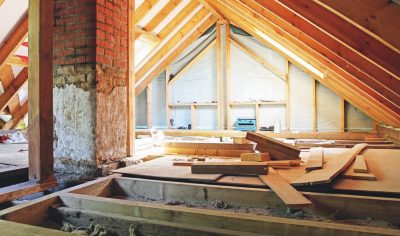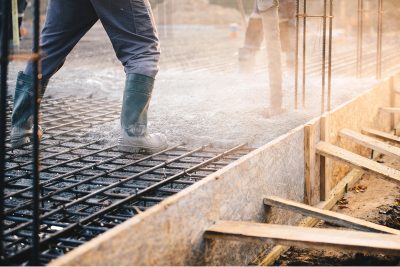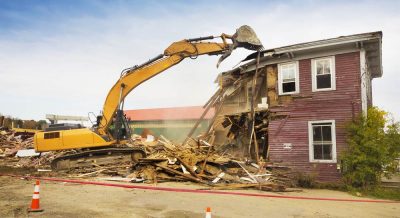- Oneflare /
- Cost Guides /
- Bricklaying

How much does Bricklaying cost?
$20 - $60 per hour
What's on this page
- How Much Does Bricklaying Cost?
- Factors Impacting Bricklaying Costs
- Costs of Different Types of Bricklaying
- How to Hire a Bricklayer
Read Related Bricklaying Articles
How Much Does Bricklaying Cost?
While some estimates suggest a labour cost to lay brick as low as $20, you may assume that it will start at $45 and be as high as $60. The total bricklayer cost will vary by the job and by the location.
Bricklaying Costs in Australia
| State | Bricklaying Labour Costs (per hour) |
| New South Wales | $60 |
| Queensland | $55 |
| Western Australia | $50 |
| South Australia | $45 |
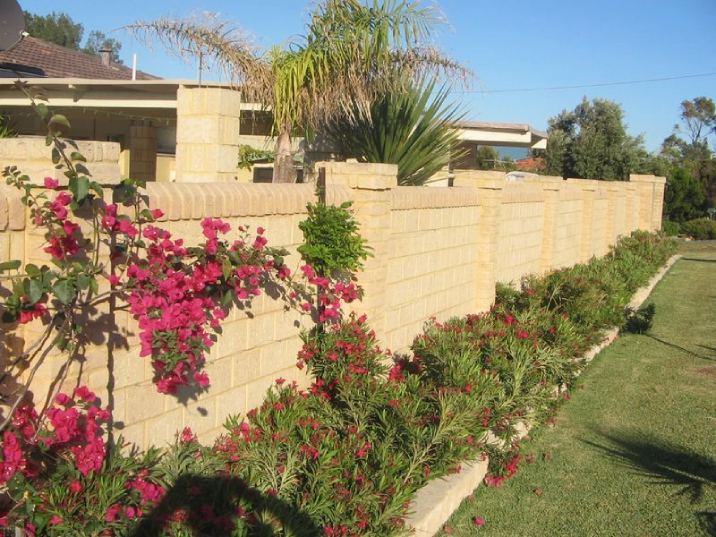
Bricks laid around a home with a hedge growing. | Source: Pannals Group
How much do bricklayers charge per 1000 bricks?
While the answer can vary depending on several factors, the standard rate for bricklaying in Australia is around $50 to $80 per hour. However, many bricklayers prefer to quote their clients per brick, with the average rate being around $500 to $1,000 per 1,000 bricks. Of course, this figure can change depending on the job’s complexity, the type of bricks used, and the project’s location. So if you’re looking for an accurate quote, speaking to a qualified bricklayer is always best.
Factors Impacting Bricklaying Costs
Materials used in bricklaying
Traditional clay bricks come in many colours. They can be used for the exterior, insulation, or interior use. This brick doesn’t need a coating nor will it ever need paint, although painting can be an option. These materials provide more sound insulation and temperature insulation than wood, plaster and siding. The brick cost will be affected by the quality and availability of the bricks you select.
Concrete bricks are made to look like clay bricks. These bricks need more control joints and extra special seals to prevent water penetration. Colour fading may decrease the value of the building in time. Concrete may be less expensive than the cost of standard bricks.
Concrete blockwork may be used in conjunction with brickwork. If it is used alone, it requires additional finishes and water-resistant seals. Autoclaved aerated concrete is lighter and better for insulation purposes.
Mortar and Adhesives
Mortar is the sand, cement, and water mixture that holds the bricks together. Depending on the type of project, different ratios of those ingredients can be used to create a mortar that is strong enough to withstand the elements. Adhesives, on the other hand, are used to bond bricks to other surfaces, such as when creating a brick veneer and Hebel blocks. Using the correct mortar and adhesive not only ensures a strong and durable structure but also adds to the beauty and appeal of the finished project.
Type of bricklaying
In construction, the simplest style is brick veneer because it is only on the exterior, and the entire structure has already been completed with the roof intact. Double brick requires an inside leaf to be constructed before the frame or roof are completed.
Location of the job
A job that is adding onto an existing structure and working around trees and other obstacles will take longer. Any accessibility issues should be discussed with your contractor before the job. This communication will ensure that these difficulties are included in the pricing.
Area of job
If the job requires scaffolding, this will add more time. Getting heavy brick up to the roofline and working high up require more hours of labour.
Job complexity
When it comes to complex bricklaying projects requiring intricate designs, arches, niches, or curves, it’s important to hire an experienced bricklayer to ensure the project is done right and completed on time. Rates for blocklaying may be similar, but they can also vary depending on the project’s complexity. Hiring an experienced blocklayer for complex projects that require more skill and time will result in higher costs. Consulting with qualified professionals in either field will help provide an accurate cost estimate for your specific project.
Price Estimates for Different Types of Bricklaying
Types of Bricklaying
Brick veneer – Since this is the most common form of brick use, it is more economical and skilled labour is more plentiful. While you get the typical long life associated with brick, it doesn’t help with insulation. The cost of bricks goes down simply because you need fewer for this style.
Solid brick – This is a high thermal mass construction technique. Walls can be load-bearing or self-supporting.
Double brick – As the name suggests, there is more work involved in this type of structure. To provide a moisture barrier and to reduce thermal transmission, double bricking is two brick walls separated by a cavity. Between the two, you may find concrete blockwork and plaster. It requires more hours of labour and a higher level of skill. Costs are higher as a result.
Reverse Brick Veneer – In this construction style, brick is used between the inner and outer wall. It provides more insulation, lowing the building’s energy demands.
Brick Fencing – The brick fence cost will be considerably higher than for other types of fencing due to the skill involved in laying bricks. The average price will be from $550 to $1,000.
Concrete – High-density block material provides excellent insulation. It will need coatings to ensure water resistance. Fly Ash Clay – This is a low-density block material. It’s a waste product that has repurposed into blocks.
Types of Bricklaying Bonds
Brick bonds are the patterns in which bricks are laid. These patterns don’t just apply to bricks on your walls but also for brick paving on baths and patios. Here are some types of brick bonds:
- Stretcher (most common)
- Header (mainly used for curved brickwork)
- English (a mixture of different brick sizes)
- Flemish (a mix of stretcher and header patterns)
- Stack (bricks placed directly on top of each other)
Other Bricklaying Types and Services
Recycled – Recycled bricks cost may be less than new ones. However, the supply is limited. If you only need enough for a small project, this may be the right choice.
Brick pointing – To improve the look or integrity of an existing brick structure, it is sometimes necessary to replace the mortar. Brick pointing is an expensive, labour-intensive process because the decaying mortar is chiselled out by hand. Then the mortar is reapplied.
Repair brickwork – If you don’t need a high skill level, repairing brickwork shouldn’t require the top labour fees. However, if it involves brick pointing, this will increase labour prices.
Lay stonework – Stonework may require some masonry, which will increase the price. Labour costs range from $50 to $60 per hour, with an average of $55 per hour. For example, a stone fireplace can be installed for a total cost of $3,000.
Paving with brick – Labour costs around $30 per square metre. With labour and paving bricks prices, you can expect it to cost $70 per square metre or more.
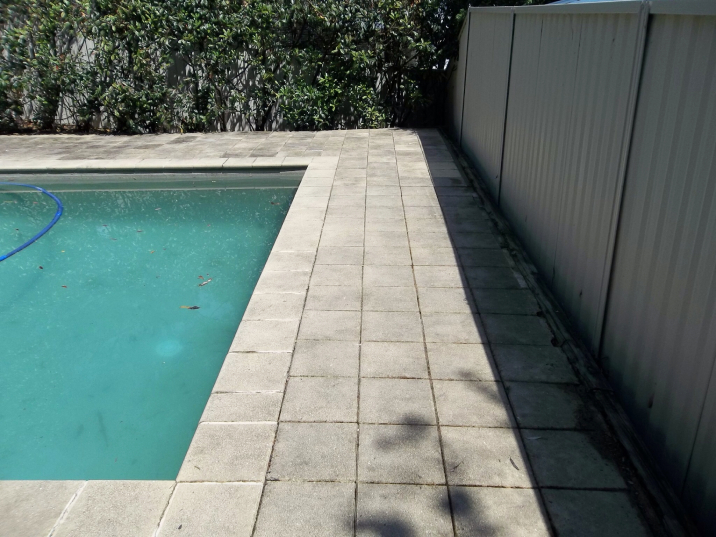
Grey brick laying around a swimming pool. | Source: Ryan Sharp Bricklaying
How to Hire a Bricklayer
Your goal should be to find someone with experience in bricklaying, has references to show previous jobs, and has at least general building licenses.
Licencing and Qualifications
In Victoria, New South Wales, and South Australia, there are specific licenses or certifications for bricklayers. In other states, the bricklayer should have a builder’s license.
Regardless, you should find out about warranties and ask to see proof of insurance. Here’s a summary of bricklaying licences across Australia. Be sure to check up-to-date data before starting your project.
| State | Bricklaying Licencing Requirements |
| New South Wales | Bricklayer Licence and Building Contractor Licence (project valued over $1,000) |
| Victoria | No legal requirement and CIC by WorkSafe |
| Queensland | Trade Contractor (projects valued over $3,300) |
| South Australia | Certificate III in Bricklaying |
| Western Australia | No licence needed unless project valued over $20,000 |
| Tasmania | No licence needed unless project valued over $5,000 |
| Australian Capital Territory | No licence needed unless project valued over $5,000 |
| Northern Territory | No licence needed unless project valued over $12,000 |
How to Create an Accurate Estimate
To create an accurate estimate, get multiple quotes from bricklayers. This will include measuring the area, assessing the job, and choosing the materials. Once you have those aspects covered, you should have a good idea of what the project will cost.
Tips on How to Save Money Hiring a Bricklayer
Tip #1 – To get the best rate for your project, you should get a minimum of three quotes.
Tip #2 – It is helpful to get bricklayers to specific an estimated time until completion. Since it is a quote, you need to know how many hours it may take and whether it is likely to run longer, increasing your costs.
Tip #3 – Ask the contractors about different brick choices. They may be able to bring prices down by recommending a cost-effective look that meets your goals.
Tip #4 – If your job is specialised, make sure to get a skilled bricklayer with experience in that type of bricklaying.
* The cost data is based on Oneflare and third-party sources
What is a brick pier?
Real Oneflare Customer Quotes
Maggie's Bricklaying Job
Job type
Building restoration and repair
Type of structure
Front brick fence
Project size
Approximately 8m
$800inc. gst
Quoted by Alexs Plastering
Jeff's Job Type
Problem
Brick fence knocked by fence
Job type
Repair and rendering
Quote to include materials?
Yes
$1000inc. gst
Quoted by Mark Theo Bricklaying
Wade's Bricklaying Job
Job type
Corner brick damage by car
Job type
Brick repair and replacement
Number of bricks
Single brick
$100inc. gst
Quoted by Venuto’s Bricklaying
